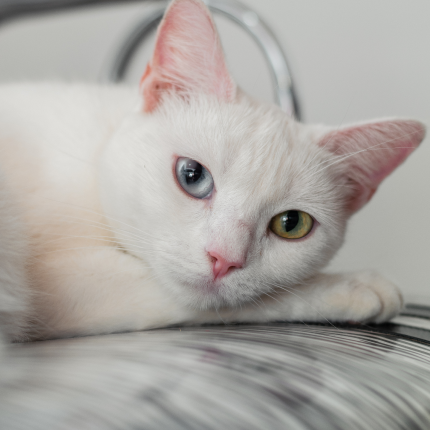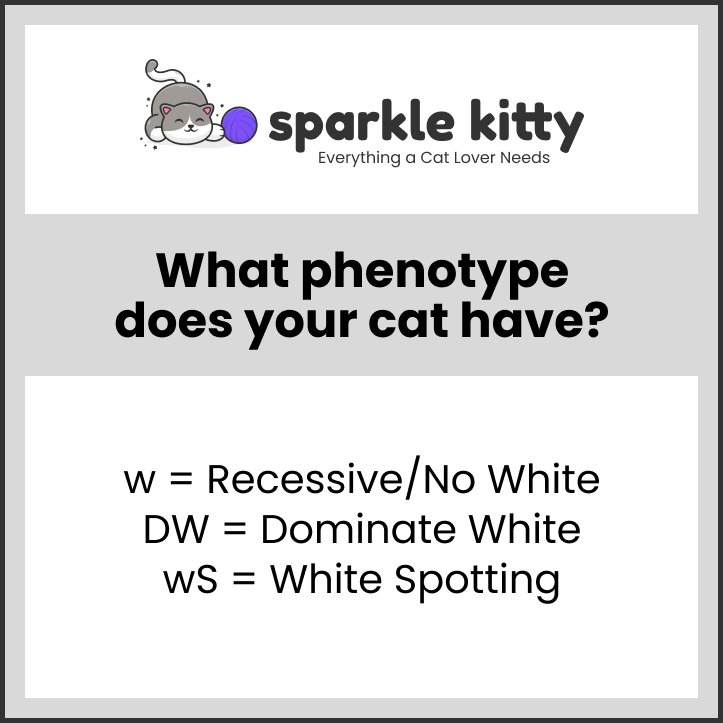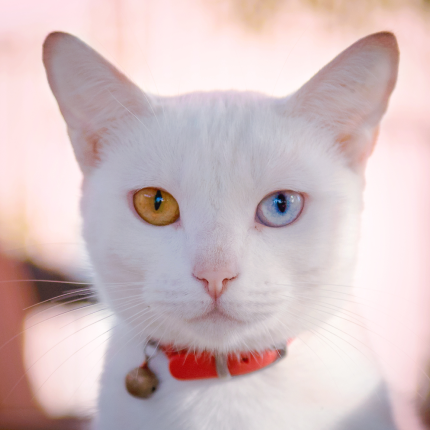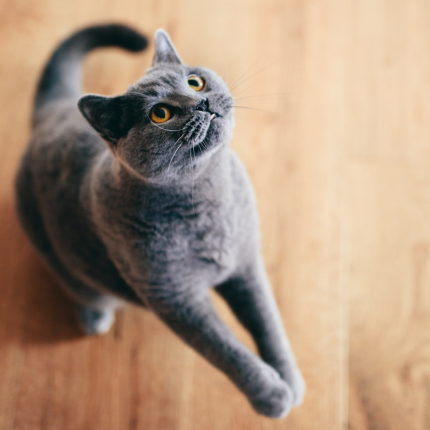White Cat Genetics

In Corpus Christi, Texas, there’s a special cat shelter called The Cattery, offering a compassionate alternative to traditional animal shelters. It’s a no-kill, cage-free haven for cats in need, including those who are homeless, abused, or abandoned.
The Cattery’s main mission is to find permanent, loving homes for its feline residents. They also actively participate in community outreach to educate the public about animal welfare, the challenges of pet overpopulation, and the joys of building human-animal connections.
Even better, they have a fantastic TikTok channel that shares fun cat facts, like this one about the unique genetics of white cats!
White Cat Genes
 “All cats are black or orange. All cats are tabbies. But what about white cats? Neat cat facts. A lot of you had questions about your white cats. And yes, even your white cat is black or orange and tabby. Aren’t genetics fun?
“All cats are black or orange. All cats are tabbies. But what about white cats? Neat cat facts. A lot of you had questions about your white cats. And yes, even your white cat is black or orange and tabby. Aren’t genetics fun?
Black and orange genetics are carried on the X chromosome, which is why every cat is black or orange. Every cat carries at least One X chromosome.
A white cat’s white coloring comes from an entirely different genetic, the KIT gene KIT, which can carry the whitephenotype. W and W can be expressed in two ways. Dominant white or white spotting.
The W phenotype is autosomal dominant. Autosomal means it’s not connected to gender, and dominant means it can be passed down by only one parent.
Cats only carry the wS phenotype, white spotting will just have white patterning in their coats, which is why some black cats are tuxedo cats or cow cats. What’s interesting about the DW phenotype though, is that its response.
What’s interesting about the DW phenotype though, is that it’s responsible for more than just white coats. It can also affect your cat’s eye color and risk for deafness.
Not every white cat is deaf, but the chances are increased that they have even just one copy of DW. A white cat with blue eyes is statistically more at risk of being deaf, but if your cat has only one blue eye, the ear on the same side as that eye is more at risk.
And all white cats only make up 2 to 5% of cats, making this coat pattern kind of rare.”

Featured Articles

The Odd-Eyed Cat (AKA Heterochromia)
Cats are already beautiful and fascinating creatures, but people are bound to take notice when they have something as captivating as two different colored eyes. Odd-eyed cats always have one blue eye paired with either a green, yellow, or brown eye. This form of heterochromia occurs in other animals, including…

Why Do Cats Roll Over Into Their Backs But Not Let You Touch Their Bellies?
It’s common knowledge dogs love to have their tummies rubbed when they freely lay down before you and roll onto their backs. But, if you’re also familiar with cats, you know that when they roll onto their backs with their bellies exposed, rubbing the belly will most likely result in…

Greebles and Cats: The Origin and the Meaning
You may have seen an internet sensation concerning cats labeled “greebles.” Feel out of the loop? We’re here to help you. In 2019, Reddit user /user/literallyatree commented on a Reddit post about a cat that looks like it’s trying to slap a ghost. This user commented: “My family calls things…
